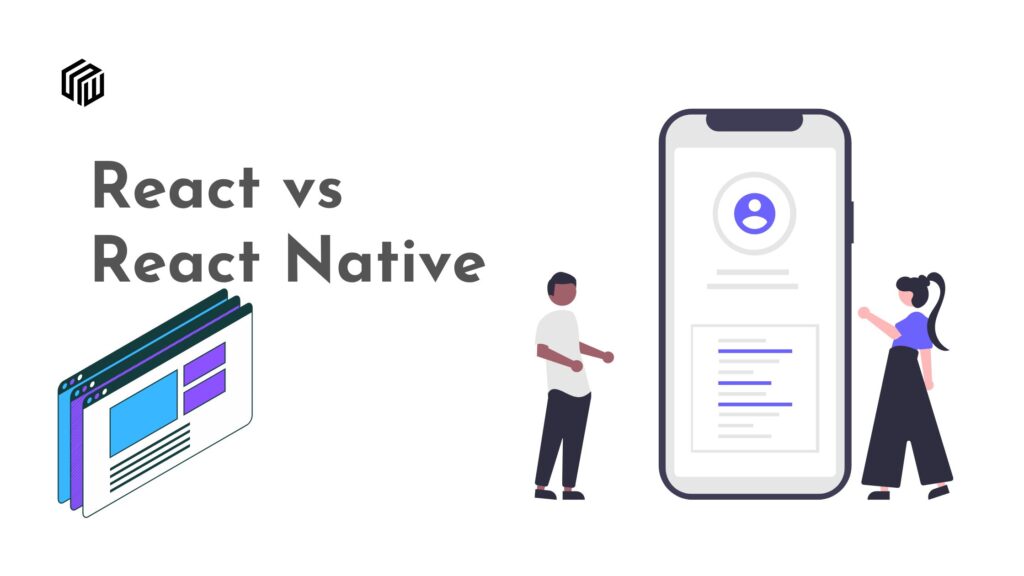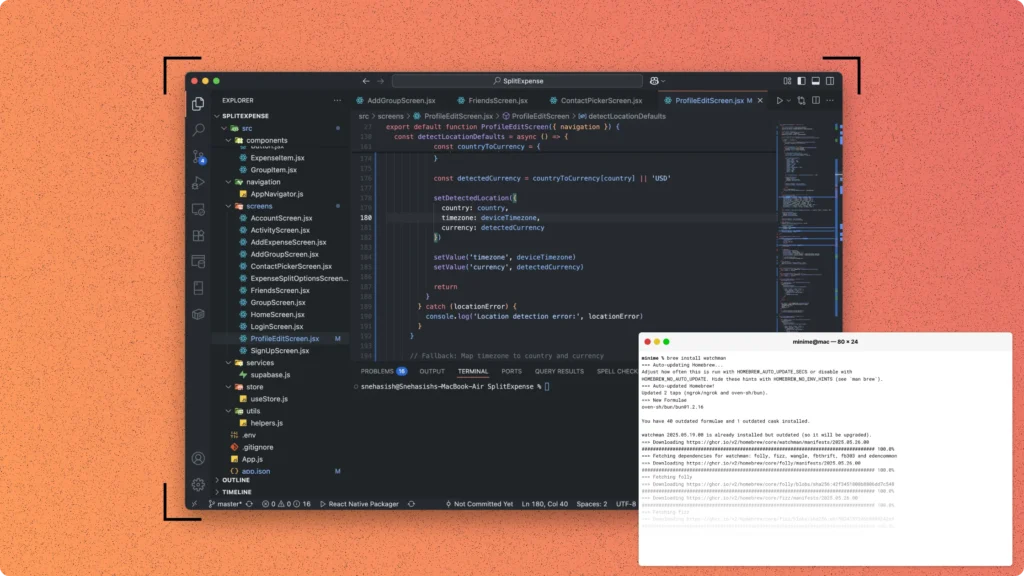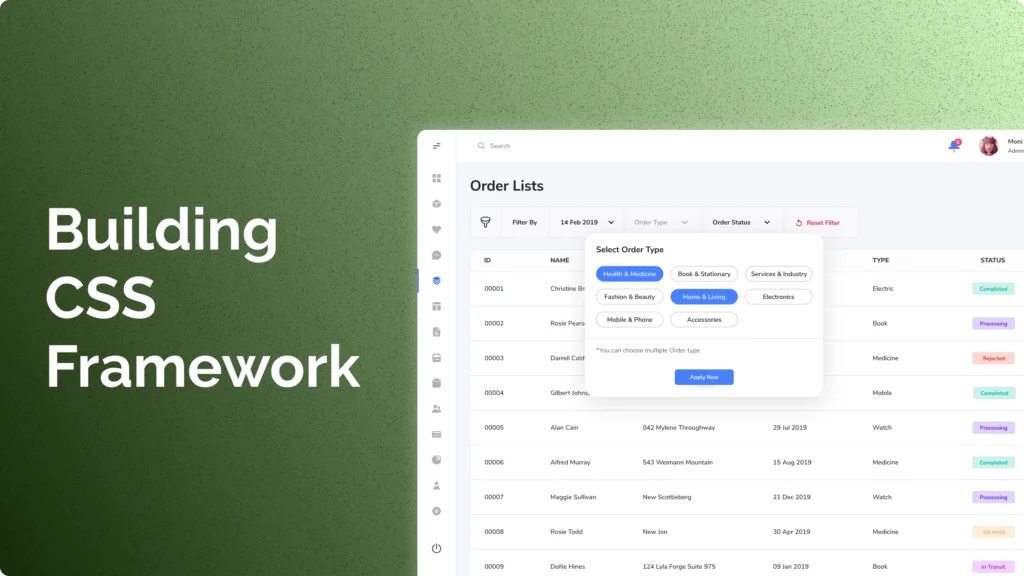React vs React Native are two popular technologies used for building user interfaces. React is a JavaScript library while React Native is a framework. Both are used for creating cross-platform mobile applications but there are some key differences between the two.
In this article, we will look at the core differences between React and React Native.
What is React?
React is a JavaScript library used for building user interfaces. It was created by Facebook and is used by some of the world’s biggest companies, including Netflix, Airbnb, and Walmart.
React is a declarative, component-based library. This means that it is easy to create reusable components that can be used in multiple places in your code.
React is also a very fast library as it uses a virtual DOM. This means that only the components that have changed are re-rendered, making your app more responsive.
What is React Native?
React Native is a framework for building cross-platform mobile applications. It was created by Facebook and is used by some of the world’s biggest companies, including Airbnb, Walmart, and Instagram.
React Native is a declarative, component-based library. This means that it is easy to create reusable components that can be used in multiple places in your code.
React Native uses the same fundamental UI building blocks as regular iOS and Android applications. This means you can use all native components like buttons, text inputs, and so on.
React Native also has a very strong community with over 800 contributors on GitHub.
React vs React Native: Core Differences
React is a JavaScript library, developed and maintained by Facebook, that helps developers create reusable UI components.
React Native, on the other hand, is a framework for building native mobile apps using JavaScript. It’s created by Facebook and lets you compose a rich mobile UI from declarative JavaScript components.
In React, everything is a component. That includes your app’s UI, individual sections of UI, buttons, text inputs, and so on. You can think of a React component as a self-contained piece of code that renders UI. Once you create a component, you can use it anywhere in your app. This makes your code more reusable and easier to reason about.
React Native components are not UI components as such; they are rather “UIManagers” responsible for managing UI components (which are also called “Views”). So, a React Native component is more like the coordinator or manager of UI components.
The main difference, then, is that React is a JavaScript library for building user interfaces, while React Native is a framework for building native mobile apps using JavaScript.
With React, you use JavaScript to create components that represent UI elements. These components can be reused throughout your app. React then uses these components to create a virtual DOM, which is a representation of the UI. When the state of the components changes, React updates the virtual DOM accordingly. It then uses a diffing algorithm to figure out which parts of the DOM have changed. Finally, React updates the real DOM with the changed parts.
React Native works in a similar way. The difference is that instead of creating a virtual DOM, React Native creates native views. When the state of a component changes, React Native re-renders the views.
Advantages of React
There are a few key advantages that React has over other front-end frameworks:
- Declarative:
React is declarative, meaning that you simply describe what your UI should look like, and React will take care of the rest. This makes your code more predictable, simpler to understand, and easy to debug. - Component-Based:
React is also component-based. This means that your UI is composed of small, self-contained pieces of code called “components”. Each component is independent of the others, so they can be reused and reason about them is easier. - Virtual DOM:
React uses a virtual DOM, which is a representation of the real DOM. When the state of a component changes, React updates the virtual DOM accordingly. It then uses a diffing algorithm to figure out which parts of the DOM have changed. Finally, React updates the real DOM with the changed parts. This makes React apps more performant since only the changed parts of the DOM are updated, instead of the whole DOM. - JSX:
React uses JSX, which is a syntax extension of JavaScript. It allows you to write HTML-like syntax in your JavaScript code. This makes your code more readable and easier to write.
- One-Way Data Flow:
React also has a one-way data flow, which means that data flows down the component hierarchy. This makes your code more predictable and easier to debug. - React Native:
Even React Native lets you build native mobile apps using React. This is a big advantage since you can now use the same framework to build for both web and mobile. - Community:
React has a large and active community. This means that there are many resources available, such as tutorials, libraries, and so on.
Disadvantages of React
However, there are some disadvantages of React that should be considered before using it as the basis for your next project.
- React is only a view layer:
React is a great tool for building user interfaces. However, it is only a view layer. This means that if you want to use React for a complete web application, you will need to use it with other libraries such as Redux for state management, React Router for routing, and so on. This can make React apps larger and more complex than apps built with other frameworks.
- React is not a framework:
React is often mistaken for a framework, but it is not. A framework is a complete set of tools that helps you build a complete web application. React is only a view layer. This means that you will need to use other libraries to build a complete React app.
- React is not easy to learn:
React is not easy to learn. The reason for this is that React is a JavaScript library, not a framework. This means that you need to have a good understanding of JavaScript before you can start using React. In addition, React uses JSX, which is a syntax extension of JavaScript. JSX is not easy to learn for beginners.
- React is not easy to use
React is not easy to use. The reason for this is that React is a JavaScript library, not a framework. This means that you need to have a good understanding of JavaScript before you can start using React. In addition, React uses JSX, which is a syntax extension of JavaScript. JSX is not easy to use for beginners.
- React is not easy to debug:
React is not easy to debug. The reason for this is that React is a JavaScript library, not a framework. This means that you need to have a good understanding of JavaScript before you can start using React. In addition, React uses JSX, which is a syntax extension of JavaScript. JSX is not easy to debug for beginners.
- React is not easy to test:
React is not easy to test. The reason for this is that React is a JavaScript library, not a framework. This means that you need to have a good understanding of JavaScript before you can start using React. In addition, React uses JSX, which is a syntax extension of JavaScript. JSX is not easy to test for beginners.
Advantages of React Native
There are a few key advantages that React Native has over other mobile development frameworks:
- Cross-Platform:
React Native lets you build for both iOS and Android using the same codebase. This is a big advantage since you don’t have to maintain two separate codebases. - Native UI:
React Native uses native UI components, which means that your app will look and feel like a native app. This is a big advantage over other frameworks that use web views, which can make your app look like a web page. - Performance
React Native apps are more performant than other mobile frameworks since they use native views. This means that they don’t have to go through the JavaScript bridge, which can be slow. - Community
React Native also has a large and active community. This means that there are many resources available, such as tutorials, libraries, and so on.
Disadvantages of React Native
However, like any other technology, it has its own set of disadvantages. Let’s take a look at some of the most prominent ones:
- Limited debugging tools
One of the biggest pain points for React Native developers is the lack of decent debugging tools. While you can use the React Native Debugger, it only covers the JavaScript side of things. There is no way to debug the native side of your app. This can be a big problem when things go wrong.
- Lack of documentation
Another big issue with React Native is the lack of documentation. The official documentation is often sparse and incomplete. This can make it very difficult to find answers to your questions. There is also a lack of high-quality tutorials and guides. This can make it hard to get started with React Native.
- Not all components are available
React Native doesn’t have all the components that you would find in a native app. This can be a problem if you need a specific component for your app. You may have to resort to using a third-party library or building the component yourself.
- Community is small
The React Native community is still relatively small. This can make it hard to find answers to your questions or get help when you’re stuck. It also means that there are fewer people working on new features and improvements.
- Not suitable for complex apps
React Native is not suitable for building complex apps. If your app is going to have a lot of features and require a lot of customization, you will be better off using a native app development framework.
Despite these disadvantages, React Native is still a popular choice for building cross-platform mobile apps. It has a lot of potentials and is constantly improving. If you’re thinking about using React Native for your next project, be sure to weigh the pros and cons carefully.
Conclusion
React and React Native are two different technologies. React is a JavaScript library for building user interfaces, while React Native is a framework for building native mobile apps using JavaScript. React has a few key advantages, such as being declarative, component-based, and having a virtual DOM. React Native has a few key advantages, such as being cross-platform, using native UI components, and being more performant.







